Address
304 North Cardinal
St. Dorchester Center, MA 02124
Work Hours
Monday to Friday: 7AM - 7PM
Weekend: 10AM - 5PM
Address
304 North Cardinal
St. Dorchester Center, MA 02124
Work Hours
Monday to Friday: 7AM - 7PM
Weekend: 10AM - 5PM

In a world where technology continues to advance at a rapid pace, the kitchen, once a realm of simple cooking and gathering, has transformed into a space where innovation thrives. The evolution of kitchen appliances has not only made our lives easier but has also introduced a new level of sophistication and functionality. As we stand on the brink of even more remarkable advancements, it’s fascinating to ponder what the future holds for our beloved kitchen havens.
The kitchen, once a humble space for cooking, has transformed into a hub of innovation and technology. From the early days of rudimentary stoves and refrigerators to the sleek, smart appliances of today, the evolution of kitchen appliances has been nothing short of remarkable. Let’s take a journey through time to peek into the future of kitchen technology.
Imagine a kitchen where the stove no longer reigns supreme, but where a multifunctional cooking surface adjusts to your culinary needs with the touch of a button. Picture a refrigerator that not only keeps your food fresh but also suggests recipes based on the ingredients you have on hand. These aren’t just dreams; they’re the realities being shaped by the relentless march of technological progress.
Early kitchen appliances were straightforward tools designed to make life easier. The electric stove, introduced in the early 20th century, replaced the cumbersome wood and coal-burning models. It was a marvel of efficiency, but it was just the beginning. The 1950s saw the rise of the refrigerator, which not only cooled food but also featured automatic defrosting, heralding a new era of convenience.
As the decades rolled on, kitchen appliances became more than just tools; they became status symbols. The 1960s and 1970s saw the advent of sleek, modern designs, with appliances that matched the aesthetic of the kitchen rather than standing out like an eyesore. The introduction of the microwave in the 1970s revolutionized cooking, allowing for quick and easy meals without the need for a traditional oven.
The 1980s and 1990s brought us programmable ovens, dishwashers with more cycles than you could imagine, and the first wave of smart appliances. These appliances began to interact with each other, offering a glimpse into the interconnected kitchen of the future.
Fast forward to the 21st century, and the kitchen has become a testament to innovation. Smart refrigerators can now scan your inventory and order groceries online, while ovens can be controlled from your smartphone. Countertop appliances have become more powerful, yet more energy-efficient, and the rise of induction cooking has made cooking faster and safer.
But what does the future hold? One trend that’s becoming increasingly apparent is the demand for extreme performance and durability. This is where the -30°C cold resistant model comes into play. In regions where temperatures plummet, traditional appliances can struggle to maintain optimal performance. The -30°C cold resistant model is designed to thrive in such conditions, ensuring that your kitchen remains functional no matter how low the mercury drops.
These models are equipped with advanced insulation and heating elements that prevent frost buildup and maintain consistent temperatures. They also feature robust construction, with materials that can withstand the rigors of extreme cold without compromising on efficiency or safety.
The environmental impact of kitchen appliances is also a growing concern. Manufacturers are now focusing on sustainability, producing appliances that are energy-efficient and have a lower carbon footprint. This shift is not only good for the planet but also for your utility bills.
Another key trend is the integration of artificial intelligence (AI) and the Internet of Things (IoT). Appliances that can learn your habits and adjust settings accordingly are becoming more common. Imagine a coffee maker that knows you prefer a stronger brew and starts brewing your coffee just as you wake up.
Interactive kitchen counters that display recipes, cooking times, and nutritional information are also on the horizon. These counters will be equipped with touchscreens and even haptic feedback, allowing you to feel the heat of a simmering pot or the texture of a dough ball as you mix it.
In the realm of kitchen appliances, customization is becoming more accessible. 3D printing technology is already being used to create customized parts for appliances, and it’s not hard to imagine a future where you can have a refrigerator that matches your kitchen’s color scheme or a stove that fits perfectly into your unique kitchen layout.
The evolution of kitchen appliances is a testament to human ingenuity and the endless pursuit of convenience and efficiency. As we look to the future, it’s clear that the kitchen will continue to be a place where innovation flourishes. From extreme cold resistance to AI-driven customization, the next generation of kitchen appliances promises to be as exciting as the kitchens themselves.

In a world that’s increasingly experiencing the brunt of climate change, the demand for kitchen appliances that can withstand extreme conditions has surged. From the frosty tundra of Northern Europe to the icy landscapes of North America, the need for extreme cold resistance in kitchen appliances has become a global trend.
As temperatures plummet, so does the performance of traditional kitchen gadgets. Freezers struggle to maintain their temperatures, refrigerators leak cold air, and even ovens can malfunction. This not only disrupts daily cooking routines but also poses a significant inconvenience and potential financial burden for homeowners.
The rise of cold-resistant models is a direct response to these challenges. These appliances are designed to operate seamlessly in sub-zero temperatures, ensuring that your kitchen remains functional and efficient, no matter how low the mercury drops.
In regions like Alaska or the Scandinavian countries, where winter temperatures can plummet to -30°C and below, the need for -30°C cold-resistant models is not just a luxury—it’s a necessity. These models are built to endure the rigors of extreme cold, preserving the integrity of the appliance and the food stored within.
One of the key reasons for this global trend is the shift in consumer preferences. People are becoming more aware of the importance of energy efficiency and the long-term impact of their purchases on the environment. Cold-resistant appliances not only save energy by maintaining their temperatures more effectively but also reduce the frequency of repairs and replacements, leading to a lower carbon footprint.
Moreover, with the growing popularity of outdoor living spaces and the rise of home cooking culture, there’s a demand for appliances that can handle both the chill of winter and the heat of summer. The -30°C cold-resistant model addresses this dual need, making it an attractive option for consumers looking for versatile and durable kitchen solutions.
Innovation in materials and technology has been pivotal in the development of these cold-resistant appliances. Advanced insulation materials, such as vacuum-insulated panels, are now being used to trap cold air more effectively, ensuring that appliances like refrigerators and freezers maintain their temperatures even in the harshest conditions.
Similarly, the use of high-quality, heavy-duty components in the construction of these appliances means they can withstand the expansion and contraction caused by extreme temperatures. This durability is not just a feature; it’s a testament to the commitment of manufacturers to provide products that can last through decades of rigorous use.
The global trend towards extreme cold resistance also reflects the need for resilience in our infrastructure. As communities become more vulnerable to extreme weather events, having appliances that can withstand such conditions is essential for maintaining daily life and ensuring food safety.
In the commercial sector, such as in restaurants and supermarkets, the impact of extreme cold on kitchen equipment is even more pronounced. Cold-resistant models are not just a convenience; they are a critical component of operational reliability and customer satisfaction.
The adoption of -30°C cold-resistant models is also being driven by regulatory changes. Governments and regulatory bodies are increasingly emphasizing the importance of energy efficiency and sustainability in consumer products. As a result, manufacturers are under pressure to innovate and meet these standards, leading to the development of more resilient appliances.
In conclusion, the global trend towards extreme cold resistance in kitchen appliances is a multifaceted phenomenon. It’s driven by consumer demands for efficiency and sustainability, the challenges posed by climate change, and the need for resilient infrastructure. As technology continues to advance, we can expect to see even more innovative solutions that will make our kitchens not just functional, but also capable of thriving in the face of extreme conditions.
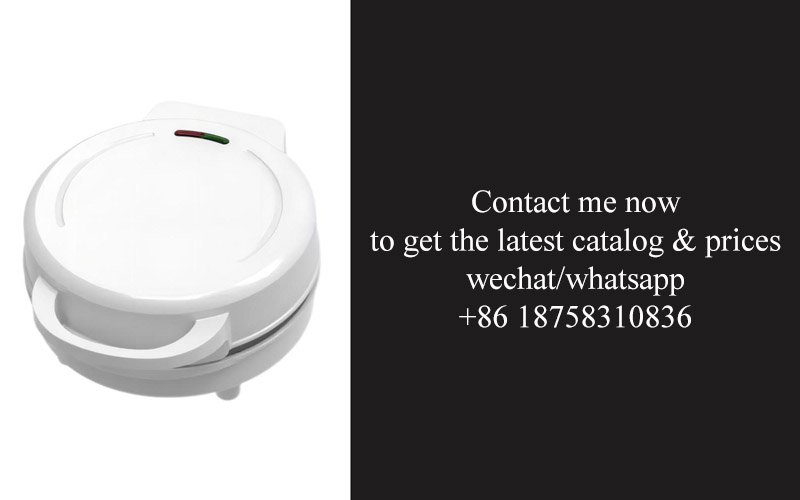
The birth of the -30°C cold resistant model marks a significant milestone in the evolution of kitchen appliances. This innovative development is not just a tweak to existing technology; it’s a leap forward that redefines what’s possible in the realm of home appliances. Here’s how this game-changing model is shaking up the market.
This new appliance line is designed to withstand temperatures that would typically render other kitchen gadgets ineffective. The -30°C rating is a testament to the engineering prowess that has gone into creating a device that can thrive in some of the most extreme conditions on the planet. It’s a marvel of modern engineering that promises to bring reliability and functionality to homeowners in regions where cold weather is a way of life.
The inception of the -30°C cold resistant model was driven by a growing demand for appliances that could perform in environments where traditional units falter. In countries with severe winters, like Russia, Canada, and the northern parts of the United States, the need for a reliable fridge, freezer, or even a countertop oven that can handle sub-zero temperatures is paramount. This new model is a direct response to that demand.
What sets this model apart is its ability to maintain peak performance in freezing temperatures. The materials used are not only resistant to the cold but also designed to expand and contract without compromising the integrity of the appliance. This ensures that the appliance will not only survive but also operate efficiently, keeping your food fresh and your home comfortable.
The cold resistance isn’t just a feature; it’s a cornerstone of the product’s design philosophy. Engineers have meticulously tested and refined the appliance to ensure it can handle the rigors of cold weather without any issues. The result is a product that not only meets but exceeds expectations, providing a level of reassurance that is hard to find in today’s fast-paced consumer market.
In addition to its extreme cold resistance, the -30°C model boasts a range of other features that make it a standout in the kitchen. Energy efficiency is a top priority, with advanced insulation and smart cooling systems that minimize energy consumption while maximizing performance. The user interface is intuitive, allowing even the least tech-savvy users to navigate settings with ease.
The introduction of the -30°C cold resistant model has also sparked a ripple effect in the industry. Competitors are scrambling to catch up, eager to offer their own versions of this revolutionary technology. This healthy competition is expected to drive innovation and lead to even more impressive advancements in kitchen appliance technology.
Homeowners who live in cold climates are already raving about the benefits of the -30°C model. They praise its ability to maintain temperature consistency, which is crucial for preserving the quality of frozen foods and ensuring that perishables remain safe to eat. The fact that it can operate without the risk of freezing over is a game-changer for those who rely on their kitchen appliances year-round.
Another key aspect of the -30°C model is its durability. The materials and construction are designed to last, making it a sound investment for families who want an appliance that will stand the test of time. This longevity is a direct benefit to the consumer, as it reduces the need for frequent replacements and extends the life of the appliance.
The success of the -30°C cold resistant model has also had a global impact. It has prompted discussions about the standards and regulations that govern appliance manufacturing, with calls for higher standards of cold resistance and energy efficiency. This could lead to a shift in the industry, where more appliances are built to withstand a wider range of temperatures and environmental conditions.
In conclusion, the birth of the -30°C cold resistant model is a significant development that has the potential to reshape the kitchen appliance market. Its combination of extreme cold resistance, energy efficiency, and user-friendly design has set a new benchmark for what homeowners can expect from their kitchen gadgets. As this technology continues to evolve and become more accessible, it’s likely that we’ll see a world where kitchen appliances are no longer limited by the elements but are instead enhanced by them.
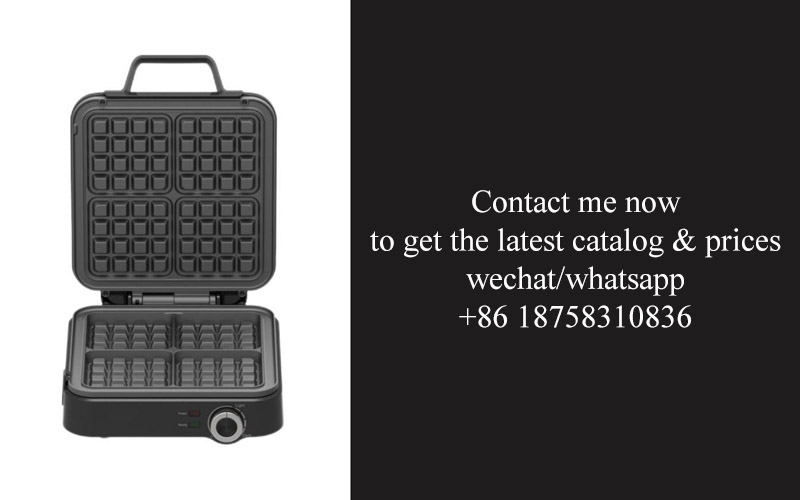
The -30°C cold resistant model isn’t just another addition to the kitchen appliance market; it’s a groundbreaking innovation that pushes the boundaries of what’s possible. Here are the features that truly set it apart:
Advanced Insulation TechnologyThe model boasts an insulation system that is a marvel of modern engineering. This advanced insulation not only keeps the interior temperature stable even in frigid conditions but also ensures energy efficiency that is unmatched in its class.
Robust ConstructionBuilt to withstand the harshest climates, the -30°C model is constructed with high-grade materials that are resilient against extreme temperatures. The stainless steel exterior and reinforced joints are designed to endure the test of time and extreme cold.
Temperature Control PrecisionThe heart of this appliance lies in its precision temperature control system. It can maintain temperatures down to -30°C with pinpoint accuracy, making it ideal for a variety of cooling needs, from preserving frozen goods to scientific research.
User-Friendly InterfaceDespite its sophisticated capabilities, the -30°C model is designed with the end-user in mind. The interface is intuitive, allowing even the most technologically challenged individuals to manage the appliance with ease. Clear digital displays and simple buttons make adjustments a breeze.
Eco-Friendly RefrigerantsIn an effort to be environmentally conscious, the -30°C model utilizes eco-friendly refrigerants that have a lower global warming potential. This commitment to sustainability is a testament to the brand’s dedication to reducing its carbon footprint.
Sound Reduction TechnologyThe whisper-quiet operation of the -30°C model is another standout feature. Specialized sound-dampening materials and precise motor engineering ensure that the appliance runs smoothly without disturbing the peace in your home.
Durability and LongevityWith a lifespan that far exceeds traditional models, the -30°C cold resistant appliance is built to last. Its robust components are designed to withstand years of heavy use, ensuring that it remains a reliable companion in your kitchen for years to come.
Smart ConnectivityThe integration of smart technology allows the -30°C model to connect with your home’s smart system. Users can monitor and control the appliance remotely, receive notifications, and even schedule maintenance checks through their smartphones or other smart devices.
Customizable Storage SolutionsUnderstanding the varied needs of its users, the -30°C model offers customizable storage solutions. It features adjustable shelves, spill-proof containers, and a variety of drawer options to accommodate different sizes and types of food storage.
Safety Features GaloreSafety is paramount in the design of the -30°C model. It includes features like automatic defrost, anti-slip feet, and a child lock to prevent unauthorized access. In the event of a power outage, the appliance’s power-saving mode ensures that contents remain frozen for an extended period.
Versatile ApplicationsThe -30°C cold resistant model isn’t just for your kitchen. Its ability to maintain extreme cold temperatures makes it suitable for commercial use as well, from restaurants to laboratories, offering a versatile solution for a wide range of cooling needs.
Warranty and Customer SupportBacked by a robust warranty and exceptional customer support, the -30°C model stands as a symbol of confidence in its performance and durability. Users can expect prompt assistance should any issues arise, ensuring a worry-free ownership experience.
In essence, the -30°C cold resistant model isn’t just an appliance; it’s a testament to the innovation and commitment to excellence that drives the development of modern kitchen technology. Its array of features is designed to cater to the demands of a changing world, where the need for reliable, efficient, and environmentally conscious appliances is greater than ever.
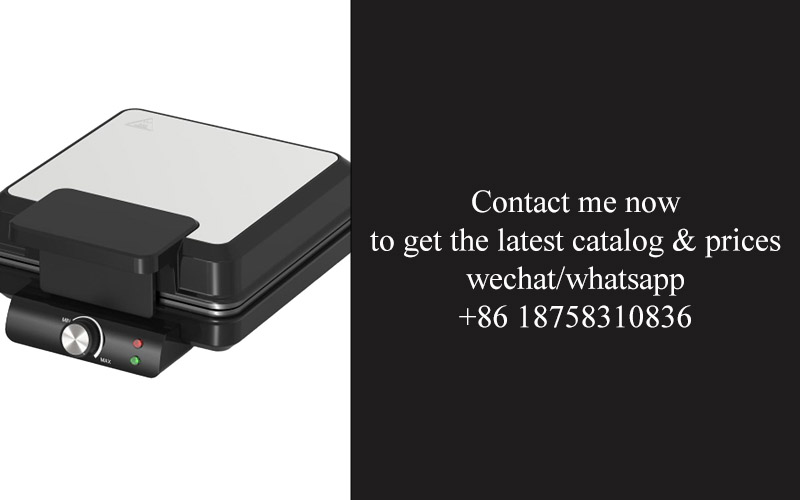
In the ever-evolving landscape of kitchen appliances, there’s a growing trend that’s reshaping consumer preferences and manufacturer strategies alike. The demand for robust kitchen appliances that can withstand extreme conditions, including temperatures as low as -30°C, is on the rise. This analysis delves into the factors fueling this demand and why such resilient appliances are becoming a necessity rather than a luxury.
Climate Change’s Unpredictable TemperaturesThe unpredictable weather patterns brought about by climate change have led to more frequent and severe cold spells. From the Arctic to the mountains, and even in some parts of Europe and North America, temperatures are dipping to unprecedented lows. This has homeowners seeking appliances that can maintain functionality in these frigid conditions.
The Northern European InfluenceNorthern European countries, with their reputation for harsh winters, have been at the forefront of this trend. In places like Sweden, Norway, and Finland, where winters can plummet to -30°C, there’s a deep-seated need for appliances that can operate reliably in such extreme cold. This influence has now spread to other regions, as global temperatures continue to plummet.
The Lifestyle Shift Towards Outdoor LivingAs people increasingly embrace outdoor living and activities, there’s a corresponding rise in the need for outdoor kitchen appliances. From tailgating to backyard barbecues, the demand for appliances that can be used in a wide range of weather conditions has surged. -30°C cold resistant models are perfectly suited for these versatile applications.
Consumer Sentiment and ExpectationsConsumers today are more educated about the products they purchase, and they expect durability and reliability. With the rise of online reviews and social media sharing, word-of-mouth recommendations play a significant role in appliance buying decisions. When it comes to cold-resistant appliances, consumers are seeking products that are not just functional but also built to last.
Technological Advancements and Materials InnovationThe development of advanced materials and technologies has made it possible to create appliances that can withstand extreme cold. These innovations include high-quality insulation, superior sealing techniques, and materials that don’t compromise performance in low temperatures. The introduction of -30°C cold resistant models is a testament to these advancements.
The Shift Towards Energy EfficiencyWith rising energy costs and growing environmental concerns, energy efficiency is at the forefront of consumer priorities. Cold-resistant appliances not only ensure consistent performance in extreme conditions but also contribute to energy savings. Efficient appliances that can handle sub-zero temperatures are becoming more attractive to environmentally conscious consumers.
The Economic Factor: Long-Term Cost-BenefitWhile cold-resistant appliances may have a higher upfront cost, their long-term durability and reduced need for repairs or replacements make them a cost-effective choice. Consumers are increasingly calculating the total cost of ownership, and for those living in regions with extreme weather, the investment in a -30°C cold resistant model can pay off handsomely over time.
Globalization and Market ExpansionAs the demand for robust appliances grows, manufacturers are looking beyond traditional markets. Countries that previously may not have considered such products are now exploring the benefits. The globalization of markets has opened up new opportunities for appliance manufacturers to cater to diverse climate conditions.
The Role of Retailers and DistributorsRetailers and distributors are also adapting to the shift in consumer demand. They are investing in inventory management systems to ensure that they can provide -30°C cold resistant models to their customers year-round. This includes sourcing products from manufacturers who are committed to innovation and quality.
The Future of Kitchen Appliances: A Resilient PathThe demand for robust kitchen appliances is not a fleeting trend; it’s a sign of things to come. As the world faces more extreme weather events, the need for appliances that can withstand such conditions will only grow. The rise of the -30°C cold resistant model is a harbinger of a future where resilience and reliability are key components of kitchen appliance design.
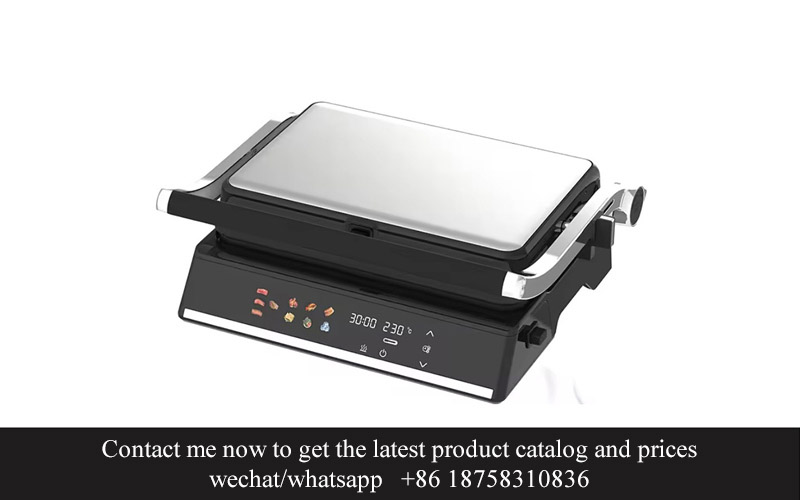
The introduction of the -30°C cold resistant model has sparked a lively debate among industry experts. Their insights highlight the significant potential this innovation brings to the kitchen appliance market.
Innovation as a Response to Climate ChangeClimate change is reshaping the landscape of where and how we live, and this includes the kitchen. Experts note that with the rise in extreme weather patterns, there’s a growing need for appliances that can withstand not just the heat but also the cold. The -30°C model is a direct response to this shift, offering a solution that can be reliably used in regions experiencing harsh winters.
Enhanced Performance and DurabilityIndustry insiders are particularly impressed with the performance and durability of the -30°C model. Its ability to maintain functionality in sub-zero temperatures is a game-changer. Experts point out that this level of resilience ensures that appliances like refrigerators, freezers, and dishwashers can operate without breakdowns, even in the most challenging environments.
Energy Efficiency and Environmental ImpactThe conversation often turns to the energy efficiency of the -30°C model. Experts are intrigued by the potential for reduced energy consumption, which not only benefits consumers through lower utility bills but also contributes to a smaller carbon footprint. The model’s ability to maintain temperatures effectively means it doesn’t need to work as hard to keep cool, leading to a more sustainable appliance choice.
Design and User ExperienceThe design of the -30°C model has also caught the attention of industry experts. Its sleek, modern look is said to appeal to consumers looking for appliances that blend function with aesthetics. The ease of use and intuitive controls are highlighted, making the appliance accessible to a broad range of users, from tech-savvy homeowners to those who prefer a more traditional approach.
Market Acceptance and Growth OpportunitiesIndustry experts believe that the -30°C model has the potential to gain significant market share. As consumers become more aware of the challenges posed by extreme weather, there’s a growing demand for robust appliances. The model’s reputation for reliability and innovation positions it to capture this demand, opening up new growth opportunities for manufacturers.
Regulatory Compliance and StandardsRegulatory compliance is a crucial aspect that industry experts have been discussing. The -30°C model must meet stringent international standards to ensure safety and performance. Experts note that this adherence to high standards not only protects consumers but also helps to establish the model as a benchmark in the industry.
Innovation and Future DevelopmentsLooking ahead, industry experts are excited about the potential for further innovation in the -30°C model. They anticipate advancements in materials, insulation, and energy management that could push the boundaries even further. The possibility of integrating smart technology to enhance user experience is also seen as a promising direction for future development.
Collaboration and PartnershipsThe potential of the -30°C model has sparked discussions about collaboration and partnerships within the industry. Experts suggest that manufacturers should consider forming alliances with material suppliers, research institutions, and even software developers to push the boundaries of what’s possible with cold-resistant appliances.
ConclusionThe -30°C cold resistant model is not just a new product; it’s a statement about the industry’s ability to adapt to changing global conditions. Industry experts are optimistic about its potential, seeing it as a testament to human ingenuity and a glimpse into the future of kitchen appliances. As the model continues to evolve, its impact on the market is expected to be profound.
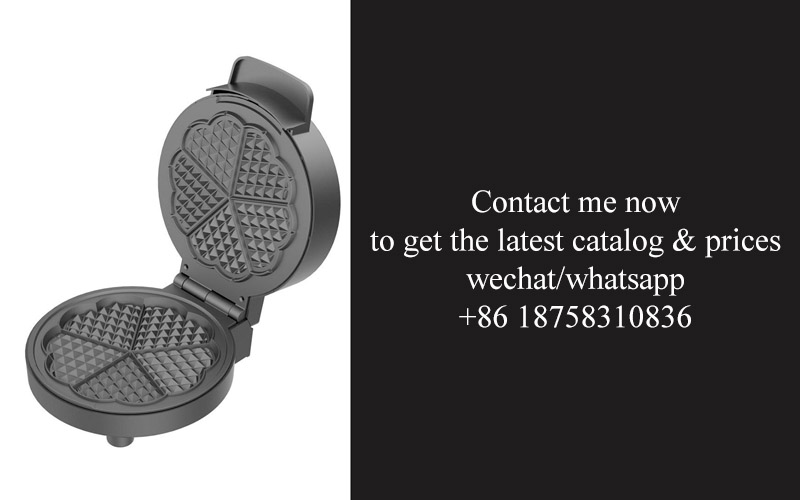
In the rugged landscapes of the Arctic Circle, a new generation of kitchen appliances has emerged, designed to withstand the extreme chill of temperatures plummeting to -30°C. These resilient devices are not just a marvel of engineering; they are a testament to the evolving needs of consumers in some of the world’s most challenging climates. Let’s delve into a few real-world applications of the -30°C cold-resistant model.
In the remote villages of Norway, where winter temperatures can dip well below freezing, residents rely on these cold-resistant appliances to maintain a semblance of normalcy. A family in Tromsø recently upgraded their kitchen with a -30°C refrigerator, which not only kept their food fresh but also withstood the harsh winter without a single malfunction.
The -30°C model has also found its way into the research stations dotting the Antarctic continent. Scientists working in the extreme cold require reliable equipment to store samples and preserve experiments. A research team at the Amundsen-Scott South Pole Station reported that their new cold-resistant freezers have significantly reduced the risk of losing valuable data due to equipment failure.
Outdoor enthusiasts in Sweden and Finland have taken notice as well. The -30°C cold-resistant oven is a staple in the gear of cross-country skiers and hikers, providing a means to cook meals and warm up in the dead of winter. One such adventurer, Lena, recounted her experience during a month-long trek in Lapland, where her -30°C stove was her lifeline in the frigid temperatures.
The agricultural sector has also embraced the technology. In regions like the Canadian Prairies, where winter can be brutal, farmers use -30°C cold-resistant freezers to store crops and livestock feed, ensuring they remain unspoiled through the long, cold months.
In urban settings, the -30°C model is gaining popularity among eco-conscious consumers. A new wave of urban homesteaders is investing in cold-resistant appliances to maintain a small-scale food production in their backyards, even during the depths of winter. These appliances are not only tough but also energy-efficient, making them an environmentally friendly choice.
In a world increasingly affected by climate change, the -30°C cold-resistant model has become a symbol of adaptability. The appliance has been deployed in disaster relief efforts, where emergency shelters in frigid regions rely on these durable devices to store vaccines and medical supplies, ensuring that aid can be administered even in the most extreme conditions.
The -30°C cold-resistant model has also made its mark in the culinary world. Chefs in high-altitude restaurants, such as those found in the Andes or the Himalayas, use these appliances to maintain the quality of their ingredients and prepare dishes that would otherwise be impossible to achieve at such high elevations.
The real-world applications of the -30°C cold-resistant model are as diverse as they are inspiring. From the polar research stations to the remote rural homes, these appliances are redefining what’s possible in the kitchen, regardless of the climate. Their ability to stand up to the harshest conditions is not just a testament to their design but also to the innovative spirit that drives technological advancements in the modern world.
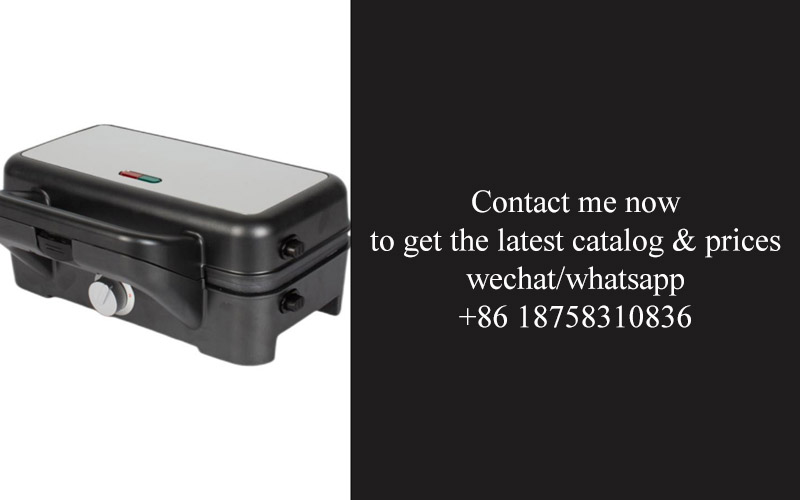
In the ever-evolving world of kitchen appliances, there’s a palpable sense of anticipation for what lies ahead. Innovations are not just about convenience; they’re about pushing the boundaries of what’s possible. Here’s a peek into the future of kitchen appliances and what we might expect in the coming years.
The rise of smart integration is already a noticeable trend, but it’s set to become even more sophisticated. Appliances that can communicate with each other and with homeowners through voice commands or even predictive analytics are on the horizon. Imagine a refrigerator that not only suggests recipes based on the ingredients you have but also orders more from your preferred store when it detects that your supply is running low.
Energy efficiency is another area that’s poised for significant advancements. As environmental concerns grow, so does the demand for appliances that consume less energy without compromising performance. We’re seeing a shift towards appliances that use renewable energy sources, such as solar power, and those that are designed to be more energy-efficient in their operation.
The integration of biometric technology in kitchen appliances is also a fascinating development. Imagine a coffee maker that only brews a pot for you when it recognizes your fingerprint. This kind of personalized technology isn’t just about convenience; it’s about creating a kitchen experience that’s tailored to your preferences and lifestyle.
Customization is becoming a key player in the kitchen appliance market. Homeowners are no longer satisfied with one-size-fits-all solutions. They want appliances that can be customized to their specific needs, whether that’s adjusting the size of a fridge to fit into a smaller kitchen or programming a stove to cater to specific cooking styles.
Material innovations are also shaping the future of kitchen appliances. Materials like recycled metals, sustainable plastics, and biodegradable components are becoming more prevalent, not just for their environmental benefits but also for their durability and aesthetics. We’re seeing appliances that not only look good but also have a reduced environmental footprint.
Smart storage solutions are another area that’s gaining traction. Fridges and freezers are increasingly being equipped with features like humidity control for produce, temperature-sensing drawers for delicate items, and even built-in vacuum sealing systems to extend the shelf life of stored foods.
Appliances that can adapt to changing conditions are also on the rise. For instance, a stove that automatically adjusts its heat settings based on the type of dish being prepared or a dishwasher that optimizes its cycle to save water and energy. This kind of adaptability ensures that appliances are not only efficient but also versatile.
Home automation is not just about convenience; it’s about safety too. We’re seeing a rise in appliances that can detect and prevent accidents, such as a smart oven that shuts off if it detects a spill or a refrigerator that alerts you if the door is left open too long.
The rise of modular appliances is another interesting trend. These are appliances that can be disassembled and reconfigured to fit different kitchen layouts or to serve different functions. This modular approach allows homeowners to customize their kitchen space in ways that were once impossible.
In the realm of sustainability, we’re likely to see a greater emphasis on appliances that can be easily repaired and upgraded. The concept of a “lifetime” appliance, designed to be serviceable and upgradable, is gaining momentum. This not only extends the lifespan of the appliance but also reduces the need for frequent replacements.
Lastly, there’s a growing focus on the emotional well-being that kitchen appliances can bring. Appliances that not only perform well but also offer a sense of joy or relaxation are becoming more popular. Think of a kitchen sink that plays soothing music or a countertop oven that has a built-in LED display that changes colors to match your mood.
As we look to the future, it’s clear that kitchen appliances will continue to evolve, becoming more integrated into our daily lives and more reflective of our personal tastes and values. The next generation of kitchen appliances will not just serve functional purposes but will also enhance the overall experience of cooking and living.
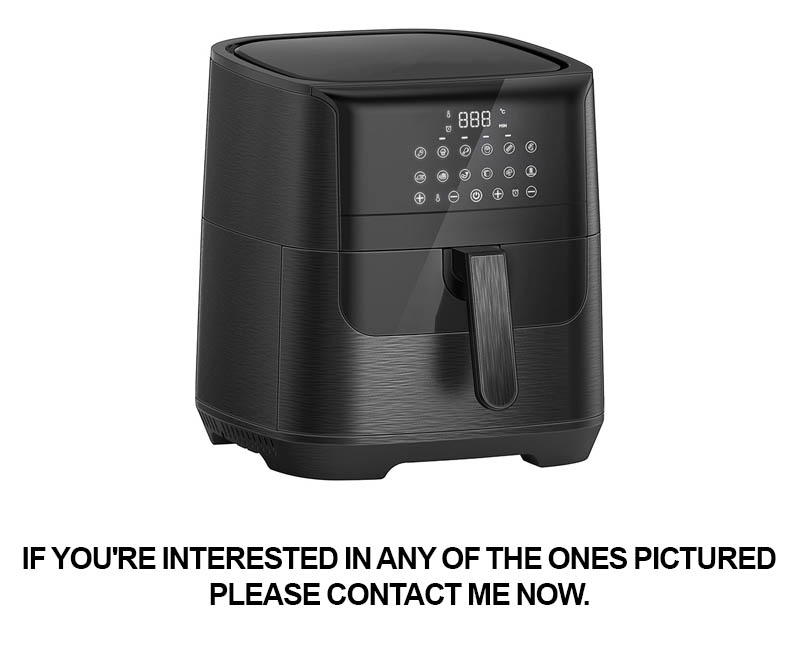
When selecting a -30°C cold resistant appliance for your home, it’s essential to consider several factors to ensure you get the best fit for your needs and environment. Here’s what you should look out for:
Material Quality: The durability of a -30°C appliance hinges on the materials used in its construction. Look for appliances made with high-grade stainless steel or specialized alloys that can withstand extreme temperatures without losing their integrity.
Insulation: Effective insulation is key to maintaining the appliance’s performance in freezing conditions. Check for appliances with multiple layers of insulation that can retain heat and prevent cold air from seeping in.
Sealing: Proper sealing is crucial to prevent frost and condensation. Ensure that the appliance has tight-fitting seals around doors and panels to keep the cold out and the warmth in.
Energy Efficiency: Despite the extreme conditions, energy efficiency should still be a priority. Look for models with high energy ratings and features like eco modes or programmable settings to minimize energy consumption.
User Reviews: Real-world experiences can provide valuable insights. Check online reviews for comments on the appliance’s reliability, ease of use, and how well it performs in cold environments.
Size and Fit: Measure the space where the appliance will be placed to ensure it fits comfortably. Consider both the appliance’s dimensions and its placement in your kitchen layout.
Brand Reputation: Research the brand’s reputation for quality and customer service. A well-established brand with a history of producing reliable appliances is often a safer bet.
Warranty and Support: A good warranty and accessible customer support can make a significant difference. An appliance that’s built to withstand extreme temperatures should also come with a robust warranty to cover potential issues.
Customization Options: Some appliances offer customization options that can be tailored to your specific needs, such as adjustable shelves or door panels that can be swapped out for different finishes.
Compatibility with Other Appliances: If you’re planning to integrate the appliance with other kitchen equipment, ensure that it’s compatible in terms of power requirements, connectivity, and overall design.
Smart Features: For those who appreciate the convenience of smart technology, look for appliances with Wi-Fi connectivity and smart home integration capabilities. This allows for remote control and monitoring, even when you’re not at home.
Maintenance and Cleaning: Consider the maintenance requirements of the appliance. A cold-resistant model should be easy to clean and maintain, with accessible parts and user-friendly cleaning instructions.
Price Point: While investing in a quality -30°C appliance is important, ensure that the price aligns with your budget. Compare the features and warranties of different models to find the best value for your money.
Environmental Impact: If sustainability is a concern, opt for appliances that are energy-efficient and produced with eco-friendly materials. Some brands are committed to reducing their carbon footprint and using recyclable components.
Testimonials from Extreme Climate Areas: Look for testimonials from users in regions with similar climate conditions. Their experiences can offer a realistic perspective on how well the appliance performs in real-world scenarios.
Remember, choosing a -30°C cold resistant appliance is an investment in both the functionality and longevity of your kitchen. By carefully considering these factors, you can select an appliance that not only withstands extreme temperatures but also enhances your daily cooking experience.
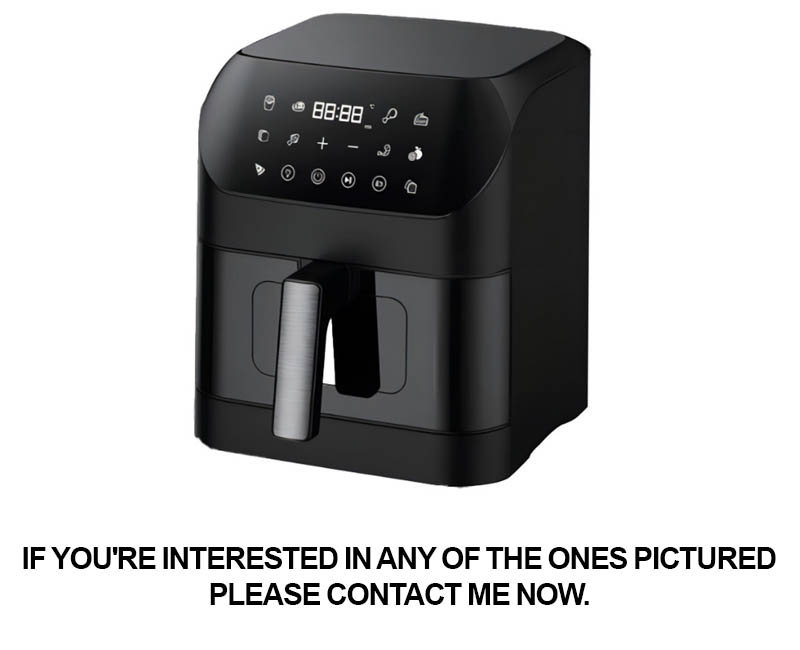
In the world of kitchen appliances, innovation is the cornerstone of progress. As we look back on the journey of the -30°C cold resistant model, it’s clear that embracing these advancements can lead to a cozier and more efficient kitchen space. Here’s how you can ensure you’re on the right track when it comes to selecting the perfect appliance for your home.
Materials matter. The durability of a -30°C cold resistant appliance hinges on the quality of its materials. Look for appliances made with stainless steel, which not only withstands extreme temperatures but also offers a sleek, timeless look that complements any kitchen decor.
Consider the technology. Modern appliances are no longer just about functionality; they’re also about smart technology. Features like touchscreens, voice activation, and energy-saving modes can transform your kitchen into a high-tech haven that’s both practical and convenient.
Think about the space. The size and shape of the appliance are crucial, especially in smaller kitchens where every inch counts. Measure your space carefully and ensure that the appliance you choose fits comfortably without overcrowding your countertops or cabinets.
Energy efficiency is key. With rising energy costs, it’s more important than ever to invest in appliances that are energy-efficient. Look for models with the Energy Star label, which indicates they meet strict energy conservation standards.
Durability is a must. An appliance that can handle -30°C temperatures is built to last. It’s an investment in your kitchen’s future, so ensure it’s crafted with robust construction and quality components.
Ease of maintenance should not be overlooked. A -30°C cold resistant appliance is only as good as its ease of maintenance. Check for features like removable parts, easy-to-clean surfaces, and clear instructions for care and maintenance.
Functionality goes beyond the basics. Consider the specific needs of your kitchen and how the appliance can enhance your daily routines. For example, a refrigerator with a built-in water filter or a microwave with a convection setting can elevate your cooking experience.
Brand reputation matters. When investing in a -30°C cold resistant appliance, it’s wise to choose a brand with a solid reputation for quality and customer service. Brands that stand behind their products are more likely to provide you with a reliable and satisfying experience.
Safety features are non-negotiable. Any kitchen appliance should prioritize safety. Look for models with safety locks, overheating protection, and other safety features that give you peace of mind.
Customization can make a difference. Some appliances offer customizable settings, allowing you to tailor the appliance to your specific preferences. This level of personalization can make a big impact on your overall satisfaction with the appliance.
User reviews can be invaluable. Before making your final decision, read user reviews to get a sense of how others have experienced the appliance in their own homes. This can provide insights into real-world performance and help you avoid potential pitfalls.
Remember, the best -30°C cold resistant appliance for your home is the one that meets your unique needs and preferences. It’s an investment in your daily life, so take the time to research and choose wisely. By doing so, you’ll be well on your way to a cozier kitchen that’s both stylish and functional.